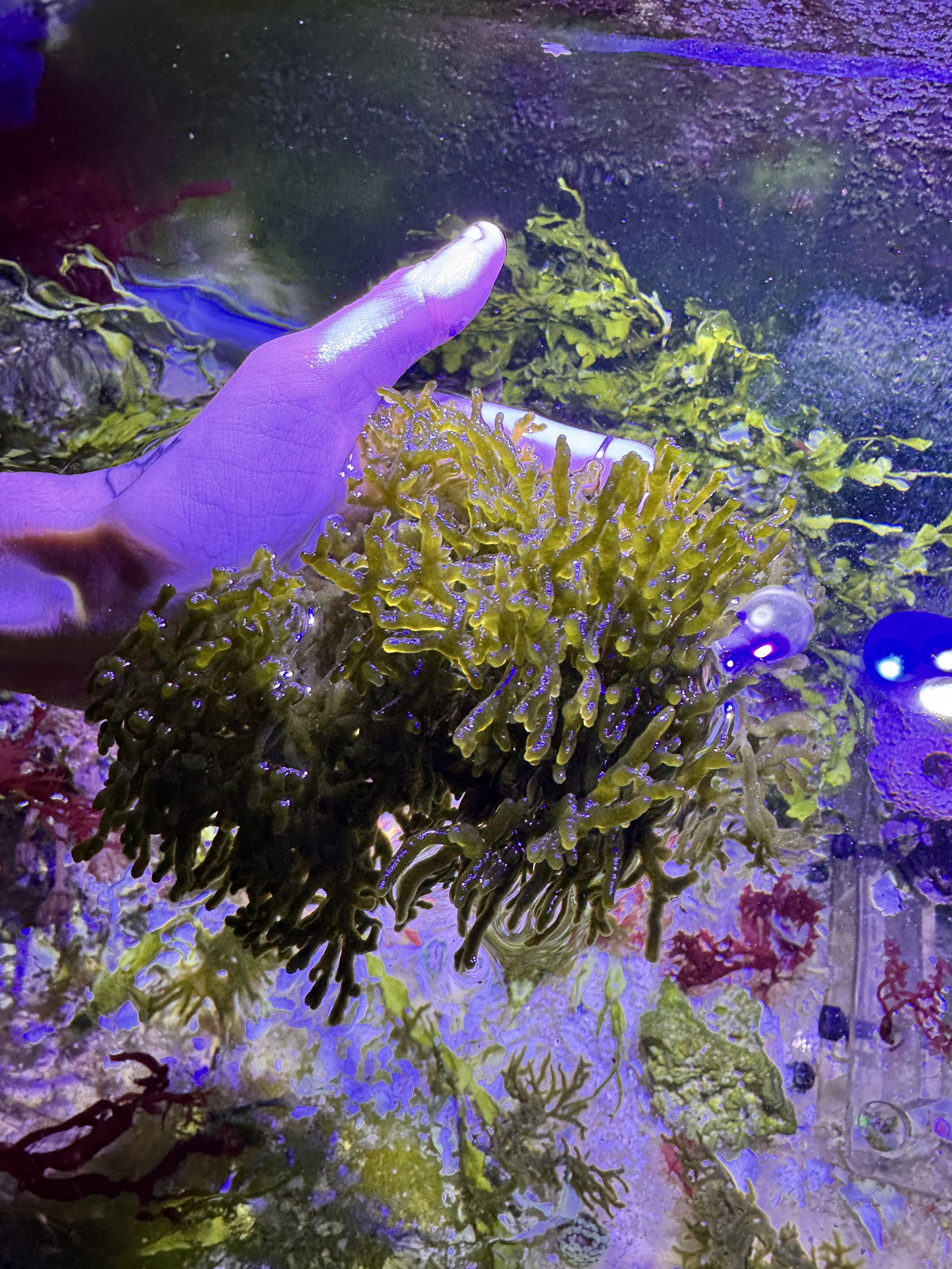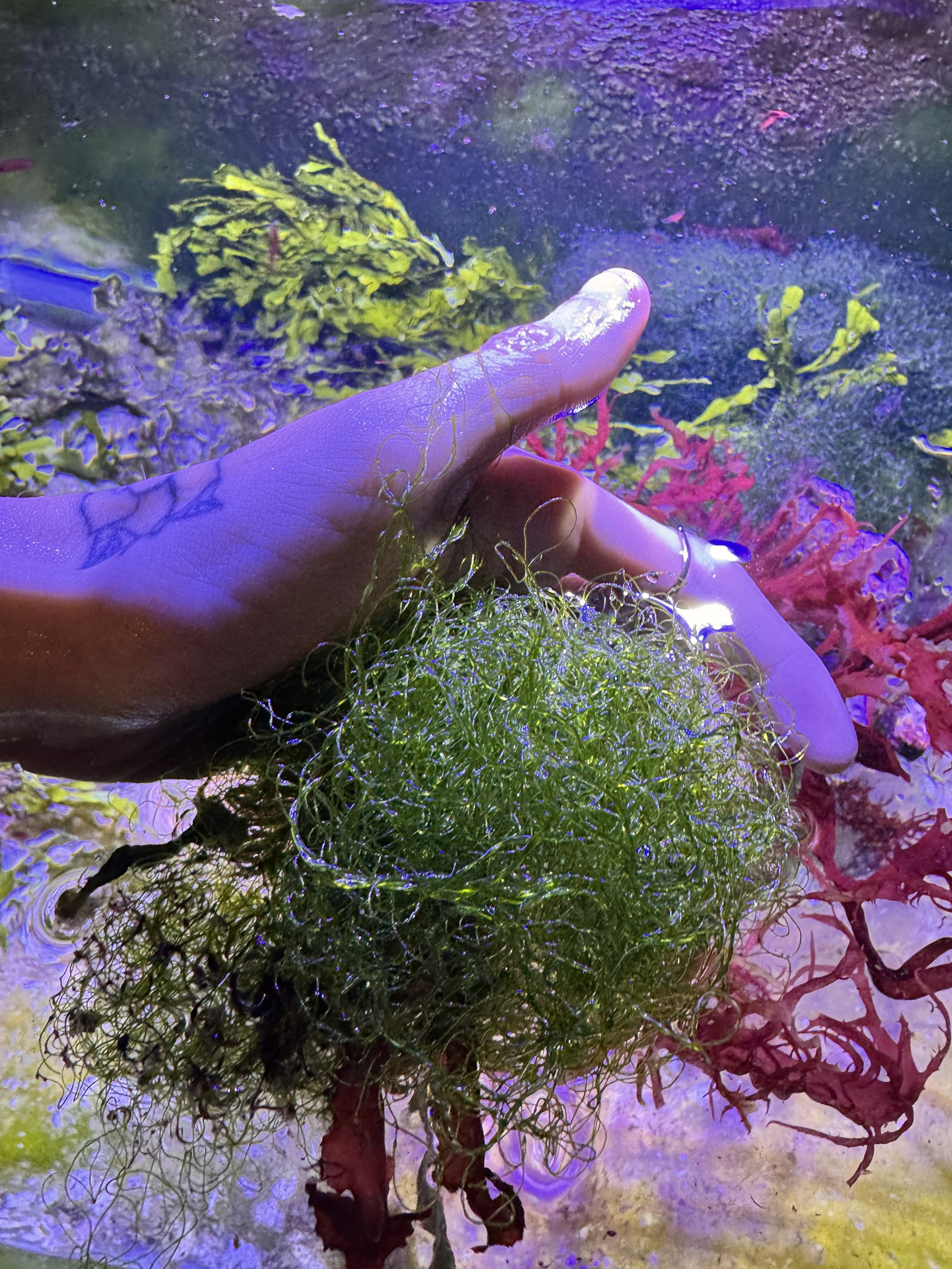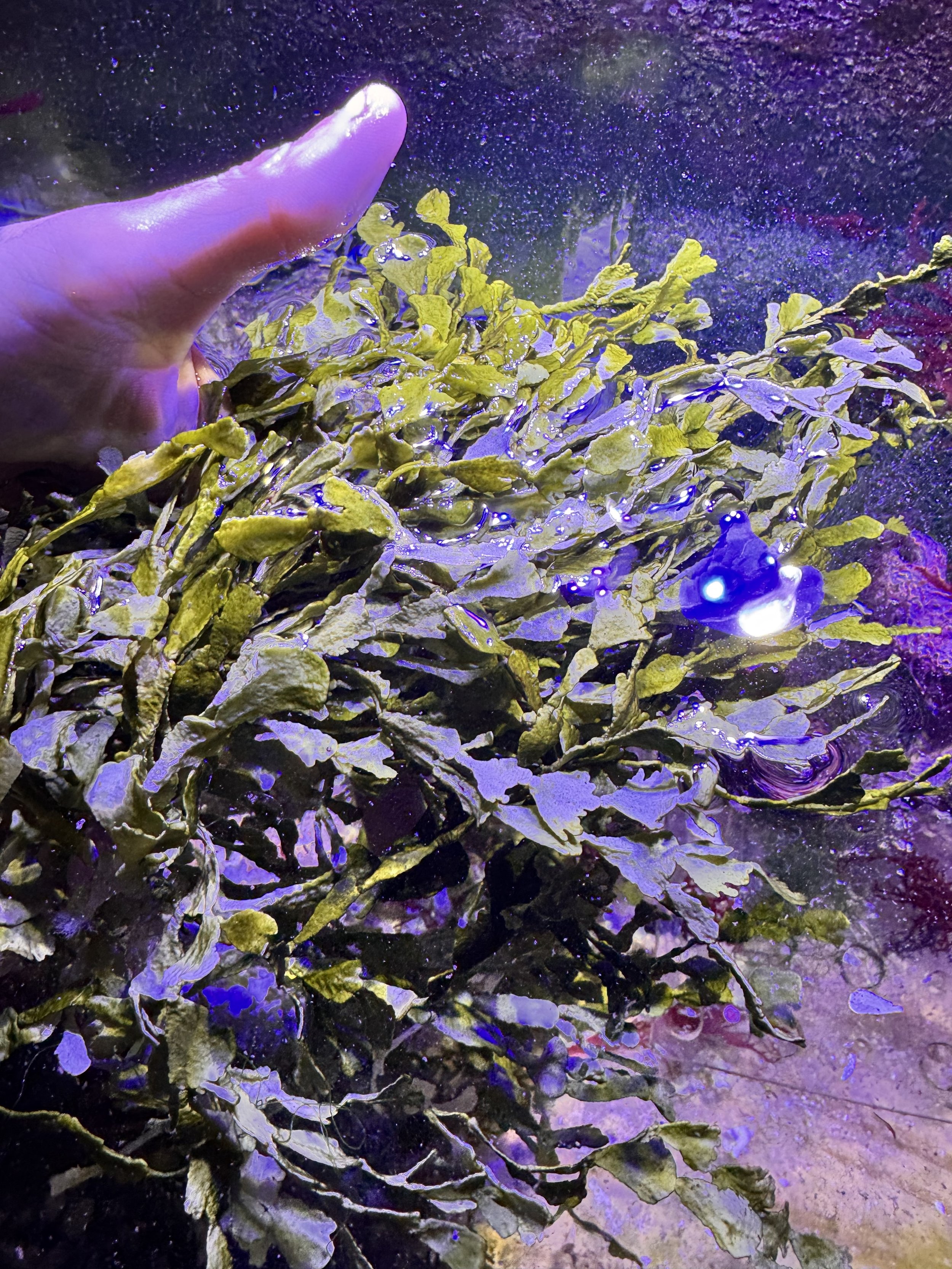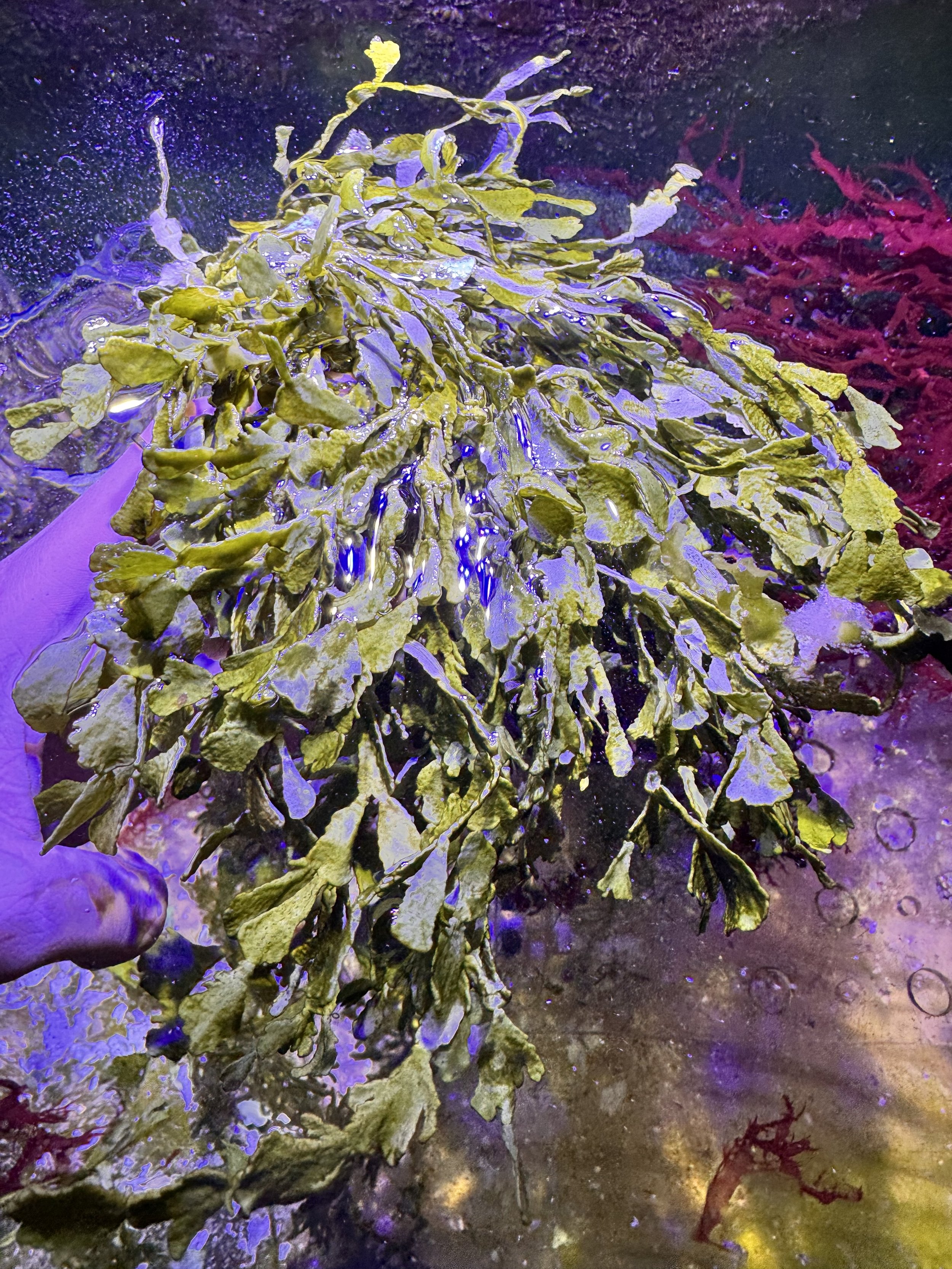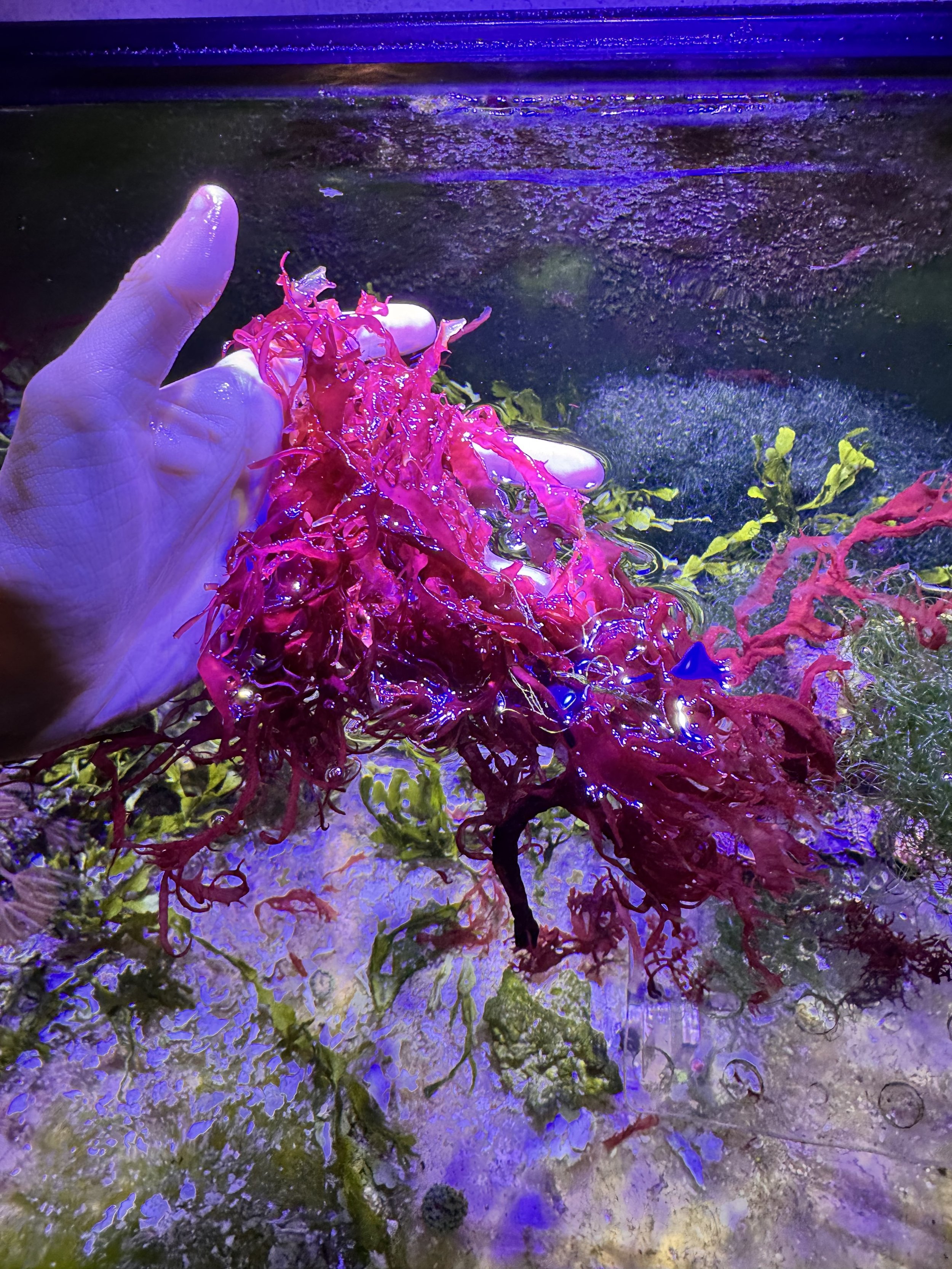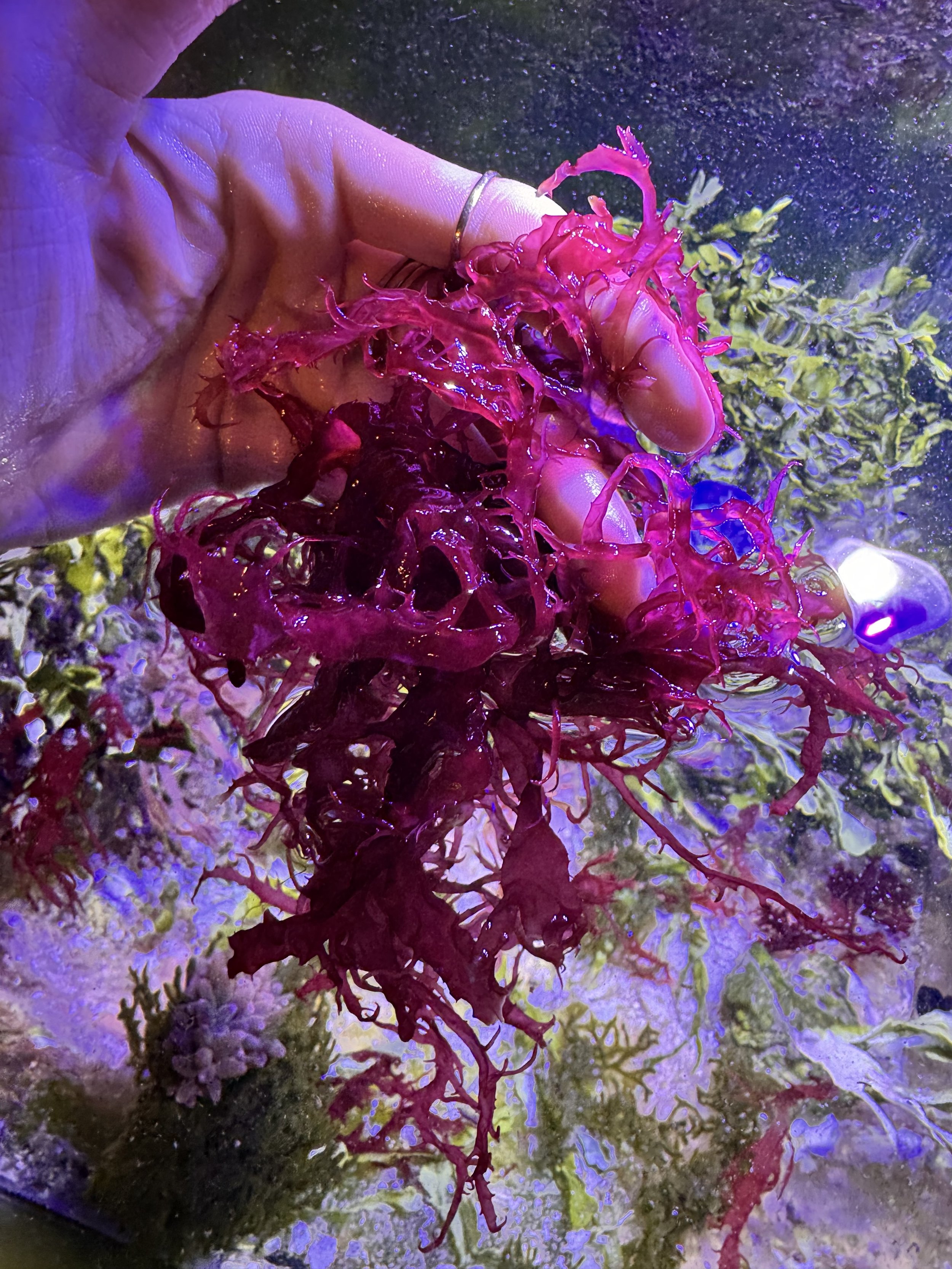Parameter Ideal Range
Temperature 72–78°F (22–26°C)
Salinity 1.024–1.026
pH 8.1–8.4
Alkalinity 8–12 dKH
Nitrate 2–10 ppm
Phosphate 0.02–0.1 ppm
Calcium 400–450 ppm
Magnesium 1250–1350 ppm
✅ Codium tolerates moderate nutrient levels, and doesn’t need aggressive dosing.
Browning/melting tips: Lack of nutrients or poor lighting
Soft/mushy structure: Decomposition—trim and stabilize water
No growth: Could be low light or ultra-clean tank
📦 Acclimation
Float to temperature match (15–30 min)
Drip acclimate for 30–60 minutes
Rinse in clean tank water (optionally RODI rinse if unsure of pests)
Place in a moderately lit, well-circulated area
Let it adjust before increasing light or moving to more exposed areas
💡 Lighting
Moderate to high light
Thrives under typical reef LEDs or T5 lighting
Best coloration under full-spectrum lights with some red and blue for photosynthesis
Photoperiod: 8–12 hours/day
🌊 Flow Requirements
Prefers moderate to strong flow
Helps prevent detritus buildup and encourages natural swaying movement
Place in an area with good circulation but not direct blast from a powerhead
🪴 Placement
Can be wedge-mounted into rock crevices or glued to rubble
Can also be free-floating in a refugium or sectioned area of the display
Can attach itself loosely over time with holdfasts
🍽️ Nutrient and Trace Element Needs
Absorbs nitrate and phosphate, but doesn’t demand high levels
Benefits from iodine, iron, and general trace supplements—especially in ultra-low nutrient systems (ULNS)
Thrives on fish waste, making it a great match for mixed reef or FOWLR tanks
✂️ Pruning & Maintenance
Grows slowly—minimal pruning needed
Trim damaged or dying branches
Shake off detritus if it collects in the arms
Monitor for any tissue browning, which can signal nutrient or light issues
🔬 Compatibility
Reef-safe
Generally ignored by herbivores, including tangs and angelfish (though large Rabbitfish may nibble occasionally)
Safe with inverts and soft/hard corals
Not invasive, unlike Caulerpa species

